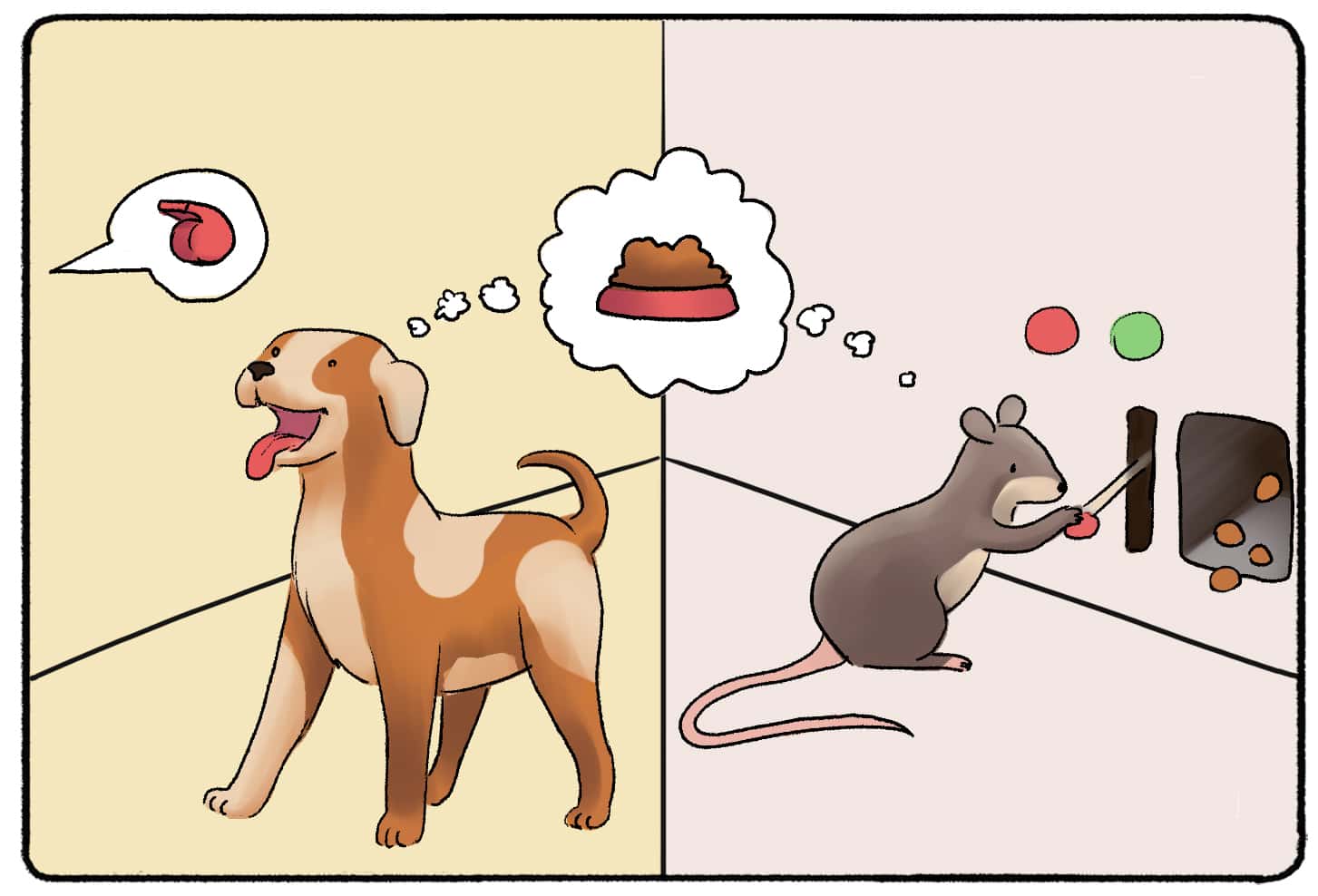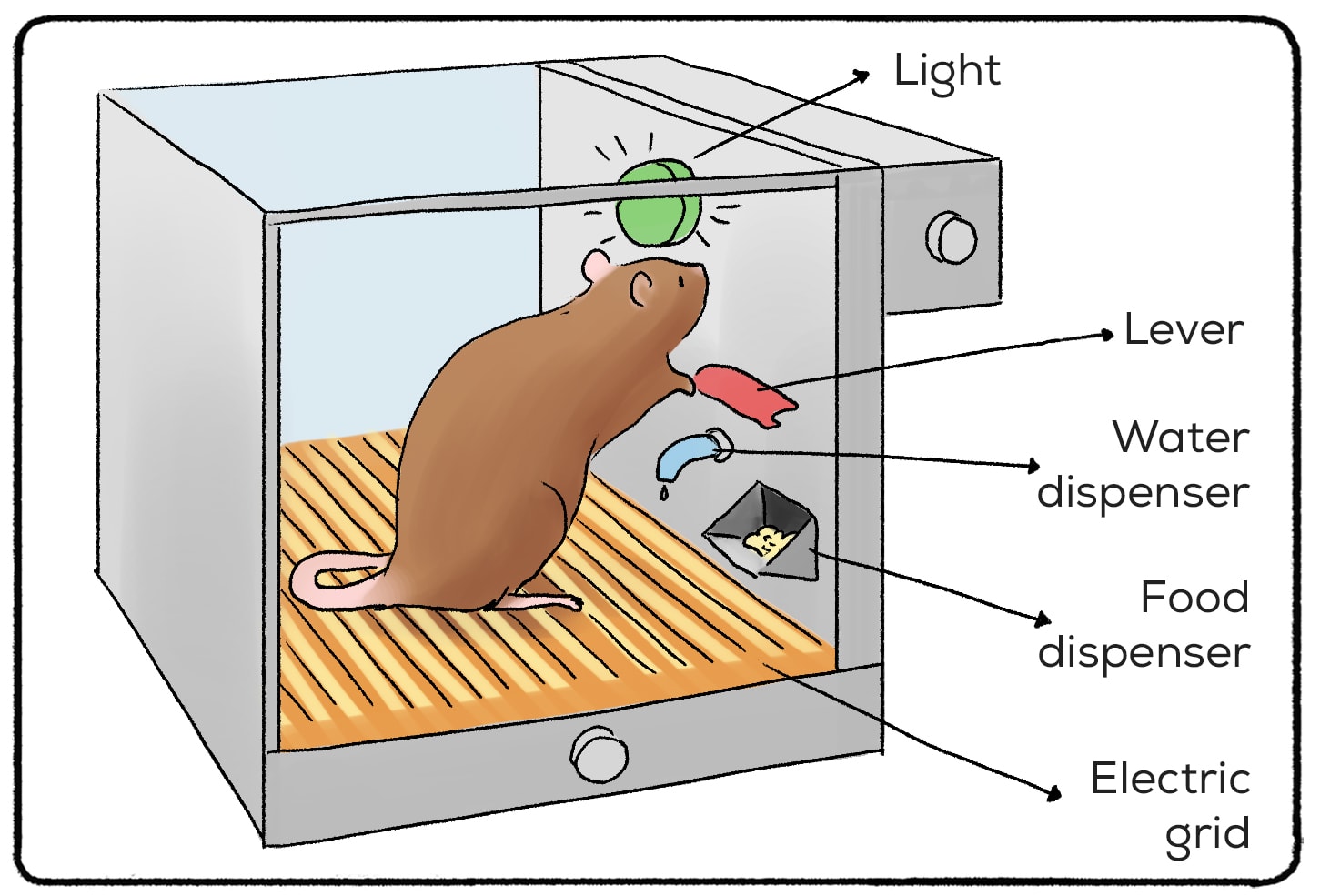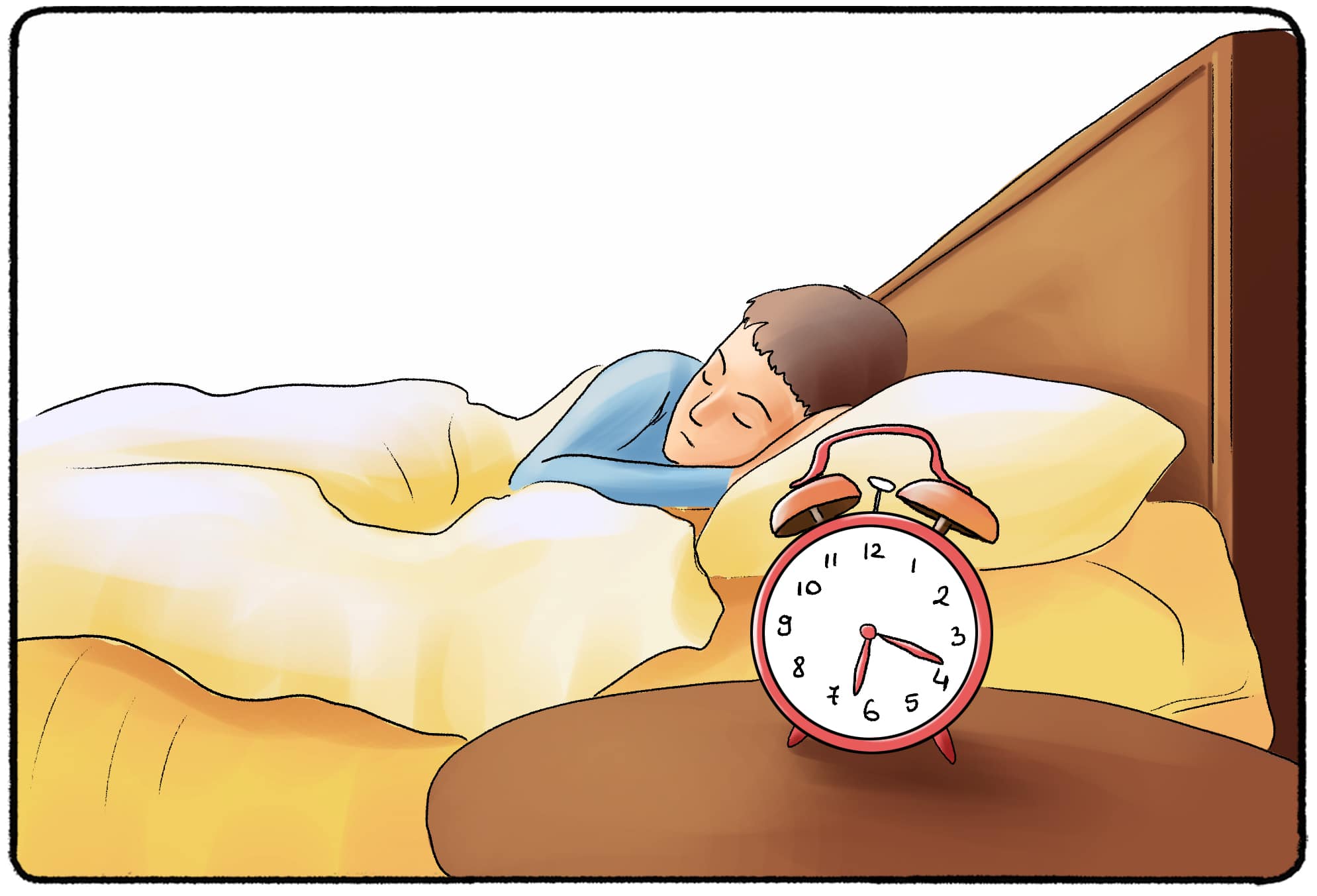What makes you unique from any other person on this planet? One may argue that every person is uniquely the sum of every experience they have ever had. We have all witnessed different things, been taught specific lessons, or experienced certain events that have shaped how we make decisions and display specific behaviors.
Let’s focus on that last word: behaviors. This article is all about the behavioral perspective of personality. We will explore how it compares to other schools of thought, how behaviorists came to their conclusions, and how you can train yourself and your personality through behaviors.
Behaviorism is no longer the dominant perspective in psychology, but it has been for many decades. While this view has its critics, it results from some of the most fascinating and well-known psychological experiments.
What is the Behavioral Perspective?
The behavior perspective, or behaviorism, is the belief that personality results from an individual’s interactions with their environment, including their decisions and actions. Psychologists can pinpoint and connect habits and behavior to predict how a person’s personality is shaped.
Take John B. Watson's famous quote on behavior and personality:
"Give me a dozen healthy infants, well-formed, and my own specified world to bring them up in, and I'll guarantee to take anyone at random and train him to become any type of specialist I might select—doctor, lawyer, artist, merchant-chief and, yes, even beggar-man and thief, regardless of his talents, penchants, tendencies, abilities, vocations, and race of his ancestors."
How would he do that? Through behaviors. John. B Watson never transformed a dozen healthy infants into the people he listed, but his beliefs in behaviors were solid. The experiences of one infant may lead them down the path toward art, while separate experiences lead another infant down the path of becoming a thief.
The interactions that may form the path of your life and the shape of your personality include:
- Traumatic life experiences
- Lessons from your parents and teachers
- Lessons from movies, TV, and other forms of media
- Relationships
All of the things that we have observed contribute to how we will later behave.
Taking every single interaction a person has with the world into account can feel overwhelming. So let’s zoom in on two ways that we may be conditioned to behave one way or another. According to behaviorism, these types of conditioning shape our later decisions and, ultimately, our personality.
The Two Types of Conditioning
Psychologists have categorized behaviorism into two processes: classical and operant conditioning. There are two important people that you should know in behaviorism, and they illustrate the two different types of conditioning.

Classical Conditioning
You probably already know one. Ivan Pavlov is the father of the now famous “Pavlov’s Dog” experiment. In this experiment, Pavlov set off a metronome for a group of dogs. The dogs would get a treat when they heard a bell after this metronome. This is a case of classic conditioning.
Soon, the dogs started to salivate when they heard the metronome physically. They automatically associated two unrelated stimuli through behavioral training. (There’s also an episode of The Office where Jim conducts a similar experiment on Dwight.)
Are we like Pavlov’s dogs? Do we associate two stimuli with each other and grow to commit certain behaviors from this association? The Little Albert Study says we do.
This study was led by an American psychologist named John B. Watson. Watson used a young boy named Albert as his “dog.” He exposed the boy to images of a white rat and other items. Then, he would make a loud and scary noise when the boy saw the image of the rat. Soon enough, the boy was classically conditioned to react with fear whenever he saw an image of a white rat.
There is one caveat in this experiment. Little Albert also began to act in a similar manner to other white things. Rather than associating his fear and the loud noise with the rat for being white, Albert made other assumptions. He behaved in an unpredictable manner toward other objects that he associated with the rat.
Keep this in mind. Can we consider the behavioral perspective a comprehensive theory unless it can account for how we associate two separate stimuli?
Operant Conditioning
The second type of conditioning is operant conditioning. This type of process can help to predict better how someone will behave. Rather than using two unrelated stimuli, operant conditioning uses rewards and punishments to shape behavior. The person can predict the reaction they will get if they behave in a certain way and may alter their behavior based on their desired reaction.
The man that many people associate with operant conditioning is named B.F. Skinner. (You can remember that "Skinner" created "Operant" conditioning because they both have 7 letters in their name.) Along with Freud, BF Skinner is one of the top-known psychologists in the world today.
Skinner vs Freud (Psychoanalysis vs. Behaviorism)
Skinner and Freud didn’t always agree, but their theories coincide to help explain why people make decisions. Freud believed that the unconscious mind is constantly seeking pleasure and avoiding pain in any way possible.
We often associate rewards with pleasure and punishment with pain. Skinner believed that you can change a person’s behavior by using a series of rewards and punishments. People will seek the behaviors that they know will please them, even if they are not inclined to act that way in the first place.
Skinner's research extended beyond teaching pigeons to play ping pong; he also trained them to assist soldiers in World War II. Using operant conditioning principles, Skinner developed a method to use pigeons for military purposes. He trained these birds to recognize and peck at images of enemy targets, which was part of a project known as "Project Pigeon."
This project aimed to use pigeons as missile guidance systems, capitalizing on their remarkable visual acuity and reliability in performing repetitive tasks. Although it might seem surprising, Skinner's innovative use of operant conditioning demonstrated that even pigeons, often underestimated, could be trained to perform complex tasks in service of larger goals.
Skinner's Box (also known as an Operant Conditioning Chamber) is a famous laboratory piece used to study the behavior of animals.

Within the box is a small animal (usually a rat). There was also a lever and a food dispenser that was hooked up to the lever and would give out a food pellet. Skinner wanted to see if the rat would associate pushing the lever with dispensing food.
Well, it worked!
Why did the rat push the lever in the first place, though? It surely didn't know the lever would dispense food pellets. Well, rats are exploratory creatures (like us humans) and would explore their environment. This includes pushing random buttons like the lever!
After much further research, Skinner realized there are four ways to encourage or discourage behavior. Here is the definition and some examples of Operant Conditioning:
Positive Reinforcement
You give them something they value or desire, usually a reward, and increase the behavior. An example is to give the rat a food pellet when it pushes the lever.
Negative Reinforcement
In an experiment with negative reinforcement, a rat in a cage learns to press a lever to stop a mild electric current applied to its habitat. Removing the unpleasant stimulus when the lever is pressed reinforces the rat's behavior, making it more likely to press it again to avoid discomfort.
Positive Punishment
Add something to decrease the behavior. An example would be smacking a dog when it barks.
Negative Punishment
Remove something to decrease the behavior. An example would be to stop paying attention to a barking dog.
Examples of Behavioral Perspective In Television and Real Life
It's not uncommon to see examples of classical and operant conditioning on TV, but it doesn't always show the larger implications of how that conditioning changes a person's personality. Take The Office. Everyone has seen the scene where Jim trains Dwight to reach his hand for a minute when Jim reboots his computer. This is a classic example of classical conditioning. Does it show changes to Dwight's personality? Not really - the scene is just meant to churn up laughs.
Another scene from The Big Bang Theory shows Sheldon "training" Penny through operant conditioning. Any time that Penny does something considerate for Sheldon, she receives chocolate. One could argue that Penny's experiences could shape her personality. If she recognizes the rewards she receives from being considerate, she may be considerate outside of the apartment where she's receiving chocolate from Sheldon. Does she? Again, this is not part of her story. The scene is mainly for laughs. (And it is a great resource for students studying operant conditioning!)
How does behaviorism explain habits like addiction? This Reddit post from r/psychology offers an analysis using the Queen's Gambit as an example.
How Behavioral Perspective Fits in With Personality Psychology
Behaviorism says that we (and our personalities) can change every day. If you are “trained” right, you can become a person with any sort of personality trait. It certainly gives hope to people who may aspire to be more driven, punctual, or have any other traditionally “good” or “successful” trait.
Anyone who has successfully trained a dog to behave in a certain way knows there is some truth to this theory. The behavioral perspective, however, is rather limited regarding the overall psychology of personality. Behaviorists don’t take into account the thoughts and feelings that are behind someone’s actions.
Example of Conflicts within the Behavioral Perspective of Psychology
A person may be on time for work every day, not because they want to or because they are generally punctual, but they may just be terrified of losing their job and not having any money. Sometimes, people choose to sacrifice their values and larger personalities for wants, needs, and desires.

Behaviorism is just one piece of the personality psychology puzzle, but it’s important to know. We can’t entirely discredit behaviorism because it does influence how people make decisions.
Can You Change Your Personality Through Behaviorism?
Everyone has something they want to change, adjust, or enhance about themselves. Can you use operant and classical conditioning to achieve that goal? Yes and no. You can incorporate behaviorism as you change your behaviors, but you must consider other factors if you want to change who you are.
Take a moment to reflect on your daily behaviors. Start by thinking about some of your daily habits. Why do you do them? Do they reflect who you are overall as a person, or do they reflect the values and patterns of thought you have established over the years? What does your commitment to these values say about your personality?
By changing your habits, you can begin to change your personality. This happens slowly. Say you wish you were more disciplined. That certainly doesn't happen overnight, but you can take on this trait by changing your behaviors. Start by getting up early or going through a disciplined morning routine that prepares you for success.
If you're having trouble performing these behaviors, incorporate some reinforcements. You don't have to punish yourself for failing to perform the behavior, but this might help. As you perform these behaviors, you open the door for more disciplined actions. As you perform these more disciplined actions, you and the people around you will notice that you have become more disciplined.
This is just one example of how you can integrate ideas from the behavioral theory of personality into your life. Start behaving as you want to, and you will become the person you have always wanted to be!
